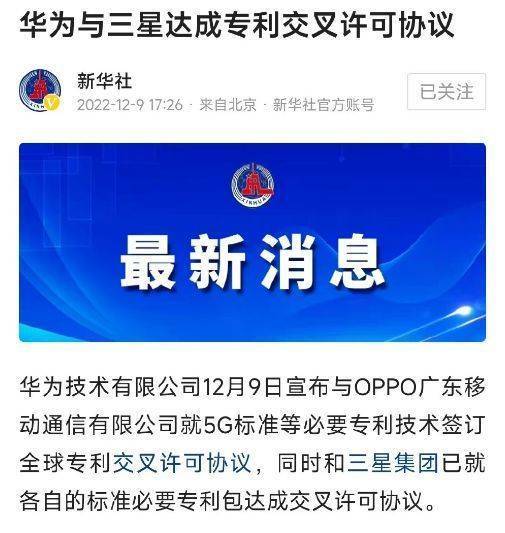
12-14 #Reading : Apple may cancel iPad mini in 2025; LGD to halt TV LCD production in Korea within Dec 2022; Huawei has signed a patent licensing agreement with Samsung; etc.

The global smartphone market will see 2% YoY growth in 2023, according to Counterpoint Research. The latest forecast has been revised downwards from the previous forecast of 6% YoY growth in 2023, as macroeconomic headwinds and consumer weakness continue to pressure the smartphone sector. It is expected to continue underperforming through 1H23 and only start to grow from 3Q23. Given an increase in ASP and a consequent long replacement cycle, they expect the annual smartphone shipments are unlikely to come back to pre-COVID levels for the short-term. Replacement cycle in 2022 is estimated to reach 43 months, its highest level ever. Although the replacement cycle gets shortened sequentially from 2023, it will stay above 40 months. (Laoyaoba, Counterpoint Research)
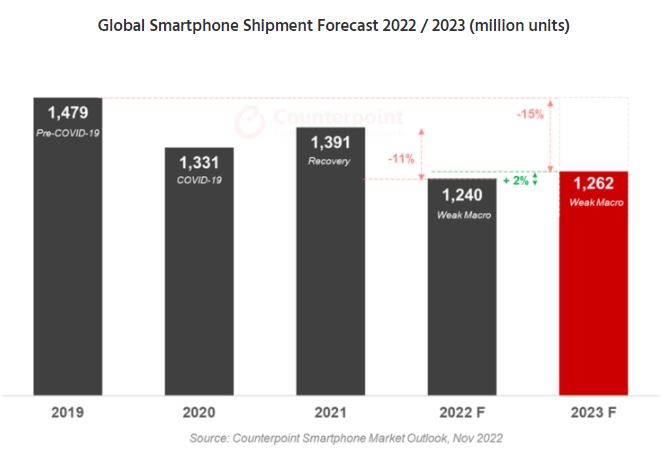
Xiaomi CEO Lei Jun has shown the Xiaomi 13 being produced in the Xiaomi Smart Factory, showing the assembly of the new machine and other aspects. The multiple steps of the assembly of the Mi 13 series, from grinding to assembly to packing, are all automatically assembled by machines. Xiaomi once introduced that Xiaomi Smart Factory is not only a “black light factory” with fully automated production lines, but also a laboratory for technology pre-research and high-end equipment research and development. It is reported that the annual production scale of the factory is about 1M ultra-high-end flagship mobile phones. In addition, the construction of the main structure of the second phase of the M1 project of Xiaomi Smart Factory has been completed in September 2022, and it is expected to be delivered and put into use by the end of 2023.(My Drivers, 163.com, IT Home, Techgoing)
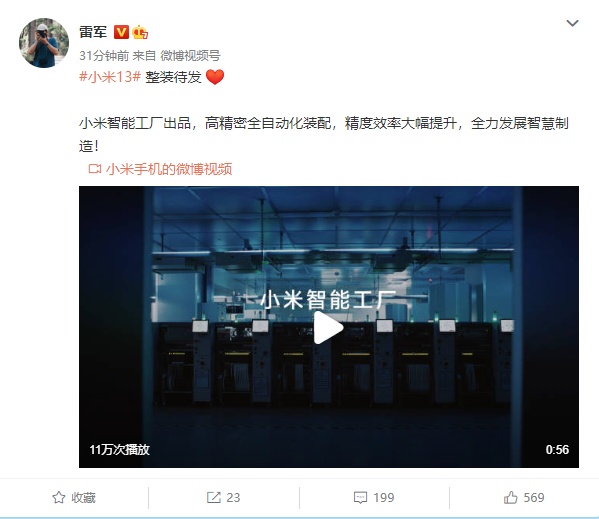
Apple reportedly wants to triple its iPhone production capacity in India within the next 2 years, part of a larger plan to diversify its supply chain out of China and into other parts of the world. Apple has allegedly instructed Foxconn, Pegatron, and Wistron, three of its biggest suppliers, to increase their capacity and manpower in the country. (MacRumors, Live Mint)
Apple is reportedly preparing to allow alternative app stores on its iPhones and iPads, part of a sweeping overhaul aimed at complying with strict European Union requirements coming in 2024. Software engineering and services employees are engaged in a major push to open up key elements of Apple’s platforms. As part of the changes, customers could ultimately download third-party software to their iPhones and iPads without using the company’s App Store, sidestepping Apple’s restrictions and the up-to-30% commission it imposes on payments. (Apple Insider, Digital Trends, Bloomberg)
The Tata Group-owned Infiniti Retail, which operates the “Croma” chain of stores, plans to open 100 stores across India that will exclusively sell Apple products. Infiniti Retail is set to become an Apple franchisee partner and will open these 100 outlets that will be between 500-600 square feet each at malls, as well as high-street and neighborhood locations. These stores will exclusively sell Apple products by becoming Apple Authorized Reseller outlets.(Neowin, India Times)
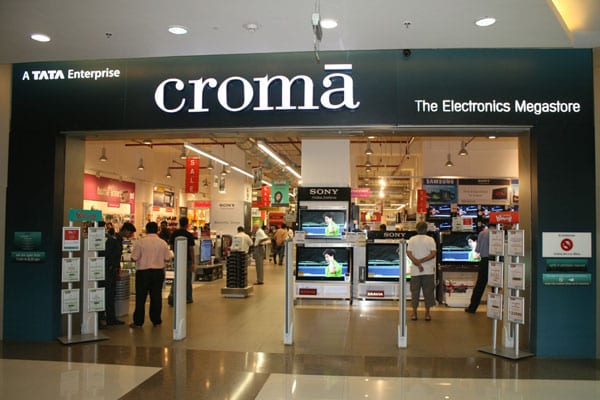
Nothing says it has opened its physical store to retail its products including smartphones and TWS earbuds. It is also in talks with some US carriers to sell new smartphones through their stores.(Gizmo China, Nothing)


Stellantis, the parent company of Fiat, Dodge, and Jeep, would indefinitely shut down a manufacturing plant in Illinois and lay off approximately 1,350 employees early 2023. The facility – located in Belvidere, a city 75 miles northwest of downtown Chicago – is responsible for producing the internal combustion engine Jeep Cherokee crossover. Stellantis has blamed the cost of electrifying its cars for the move. (Engadget, Reuters, The Verge, Detroit News)

The UK government has announced a new round of funding for “transport technologies of the future” which includes rescue mission drones, sensors to help visually impaired people use transport, and more. The government says that up to 60 projects will be awarded a share of the GBP1.85M fund to develop early stage research that focuses on innovative ideas for creating a better transport system. (Neowin, UK Gov)

In Aug 2022, Xiaomi unveiled its full-scale humanoid bionic robot, CyberOne. Standing at 177cm tall and weighing 52kg, the robot impressed with its ability to perform human-like movements. CyberOne has been trained to play drums. The robot was able to complete its drum performance in three steps. First, it automatically parsed out the beat from an input Midi music file to generate a drum sequence. Then, using an offline motion library and online calibration, a motion trajectory synchronized with the drum sequence was generated. Finally, the robot’s body was controlled to complete each movement through a whole-body controller.(Gizmo China, IEEE, IT Home)
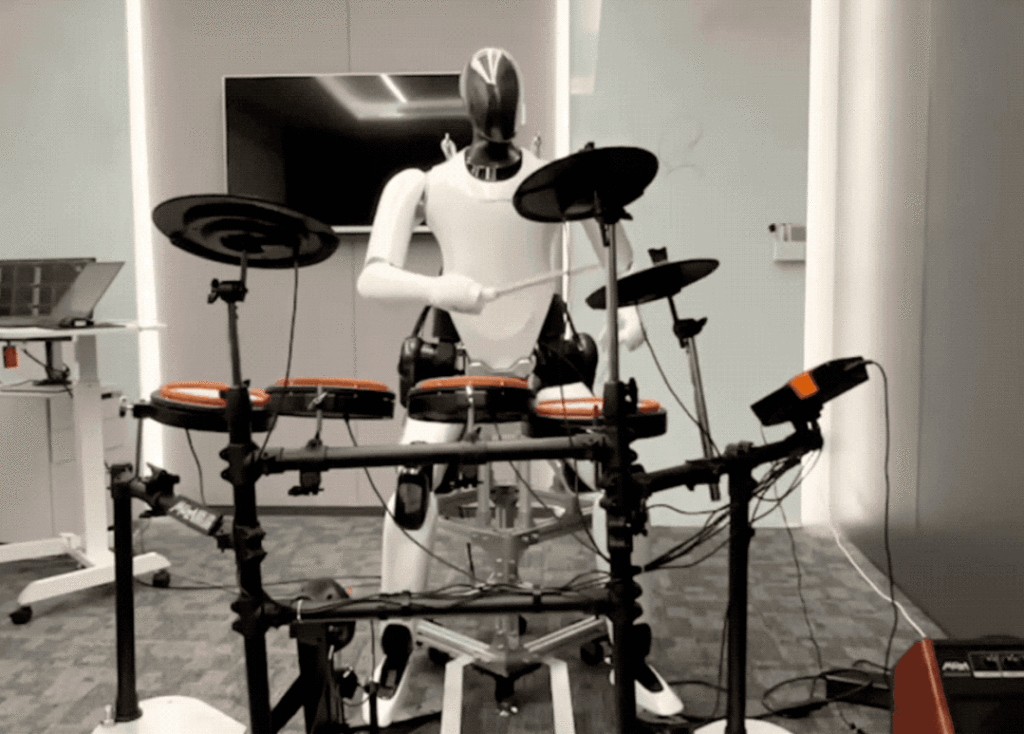

Semiconductor industry analyst Dylan Patel has said that STMicroelectronics will enter the 10nm process in the future, but considering that the mentioned fab will not be able to produce the 18nm process at full capacity until 2026, the specific time to realize the 10nm process may be later. According to Dylan Patel, STMicroelectronics will produce 50,000 wafers per month of 18nm FD-SOI, and will then move to the next node, using a 10nm process. The STMicroelectronics fab will cooperate with GlobalFoundries for production. (Laoyaoba, Twitter, 163.com)
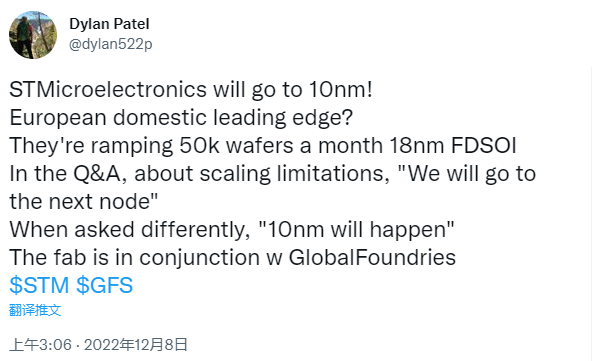
Vedanta and Foxconn have finalised Dholera Industrial City, Gujarat as the location for their proposal for setting up of semiconductor Fabs in India, and planning to put into production in 2025. Foxconn will invest USD500M in India to expand its manufacturing presence on the subcontinent – including a venture to make semiconductors. The company’s expansion plans are in line with India’s goal to increase local electronics production 400% by 2026. The country has also created a USD10B subsidy scheme to lure semiconductor manufacturers. Tata Group will look at manufacturing its own chipsets in India within a few year. Tata already has multiple EV options for car buyers in India and is one of the key players in the segment. (Laoyaoba, Business World, Indian Express, The Register, Asia Nikkei)
It is predicted that the 3nm foundry market will increase more than 20 times from 2022 (USD1.2B) to USD24.2B in 2026. Currently, Samsung Electronics is the only company that has announced that it has succeeded in mass-producing 3nm chips. According to Gartner, the processes that account for the largest share in the foundry market as of the end of 2022 are 5nm and 7nm (USD36.9B). However, while the share of 5nm and 7nm is gradually decreasing, the portion of 3nm is expected to increase rapidly.(Laoyaoba, Korea Posten, Techgoing)
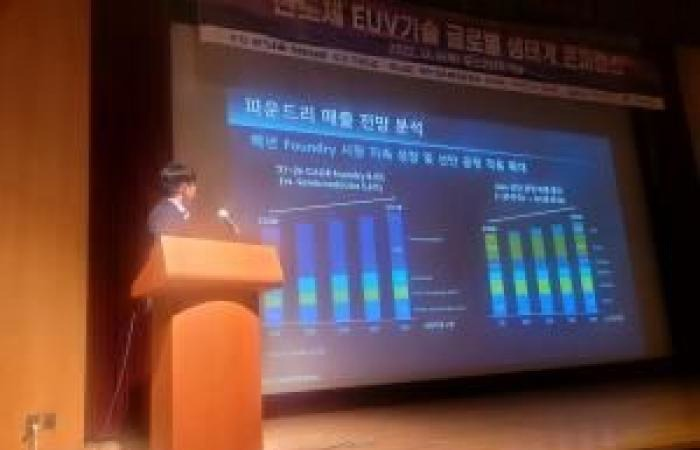
The U.S. is urging allies including Japan to follow its lead on restricting exports of advanced semiconductors and related technology to China, likely intensifying the impact of Chinese-American tensions on chipmakers worldwide. The curbs allow companies to apply for exemptions, but with a presumption of denial, meaning such requests are unlikely to be granted. Violators may face civil and criminal penalties. The U.S. holds 12% of the global semiconductor market, while Taiwan and South Korea each have about a 20% share and Japan has 15%. Some American players have called for other countries to adopt U.S.-style export curbs, arguing that it is unfair for only American companies to lose out on Chinese business. (Laoyaoba, Asia Nikkei)
NVIDIA is reportedly in talks with TSMC to develop Blackwell on the TSMC’s 3nm node but this is the first (pseudo) official confirmation that the architecture will, in fact, launch in 2024 as expected. NVIDIA Hopper was the world’s fastest 4nm GPU at launch and the world’s first with HBM3 memory. It features higher specifications than even the NVIDIA RTX 4090 (which contains 16,384 CUDA cores) at a net total of 18,432 CUDA cores. Blackwell will provide significant generational improvement over Hopper. (My Drivers, WCCFTech)
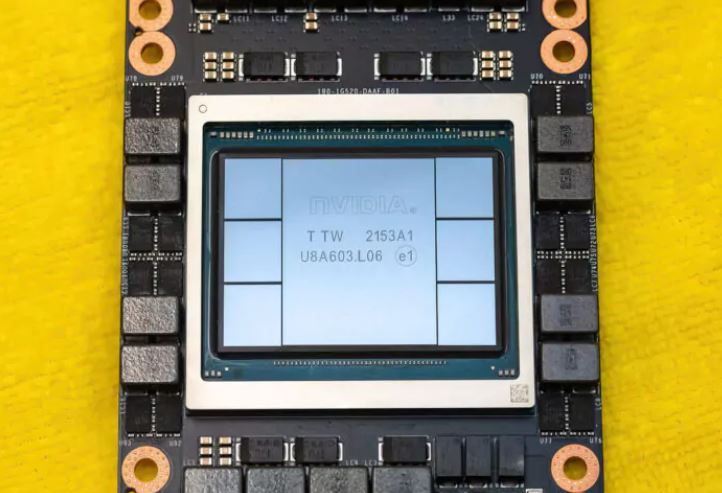
The worldwide semiconductor industry is projected to invest more than USD500B in 84 volume chipmaking facilities starting construction from 2021 to 2023, with segments including automotive and high-performance computing fueling the spending increases, according to SEMI. The projected growth in global factory count includes a record high 33 new semiconductor manufacturing facilities starting construction this year and 28 more in 2023. (Laoyaoba, EE News Europe, UDN, Digitimes, SEMI)
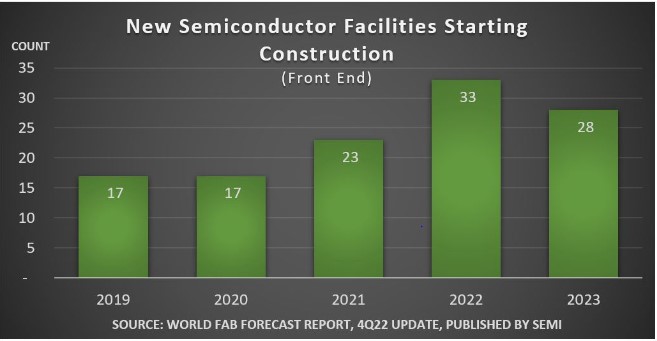

Apple, Samsung Display and LG Display are reportedly cooperating to jointly develop a 20.25” foldable OLED panel. Apple is working on a foldable product project in the 20” size range. The company is also cooperating with some major Chinese part makers. Before the launch of the 20.25” foldable Macbook device, Apple may first launch a foldable iPad. Apple is developing a foldable digital product internally and aims to release it in 2025, a year after Apple launched its first OLED iPad in 2024. This foldable iPad will replace the current iPad mini product line under 10”. (Laoyaoba, SamMobile, The Elec, GizChina)
Dasung, a Chinese company the specialized in displays and tablets with E Ink displays, has announced Dasung Link, the company’s first 6.7” E ePaper display meant to be used with smartphone. It features a 6.7” black and white E Ink display with 300 pixels per inch. The Link has an aluminum body that measures 8mm (0.31 inches) thick, physical buttons on the sides, and a touchscreen. The Dasung Link also has a front-light system with adjustable color temperature, allowing you to more easily view the screen in dimly lit environments, while adjusting the amount of blue light emitted at night (or any other time). (Liliputing, Zhifu, Weibo)
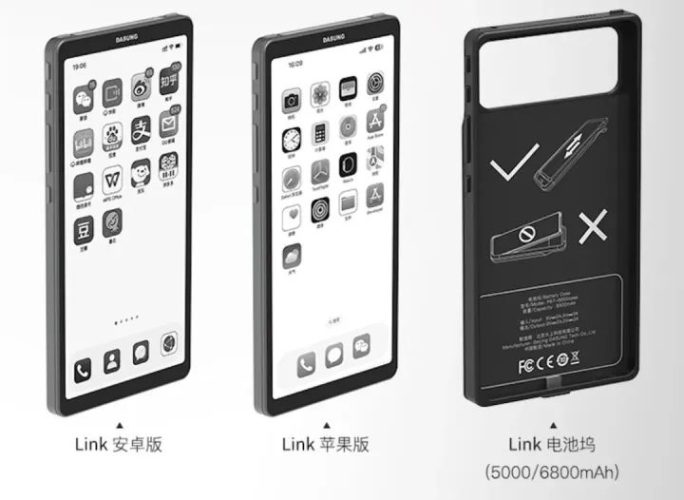
LG Display (LGD) is planning to halt production of liquid crystal display (LCD) panels for TVs in South Korea within Dec 2022. The P7 factory at the company’s facility in Paju, which is responsible for the panels’ production, will halt production within Dec 2022. The nearby P8 will continue to manufacture LCD panels for IT products. LGD will also continue to manufacture LCD panels for TVs at its facility in Guangzhou, China. However, their production capacity will be reduced by 40% than before (from 210,000 Gen 8.5 substrates per month to 120,000). The facility has two factory lines, namely GP1 and GP2. P7 had previously made LCD panels ranging 43”-50” in size.(The Elec)
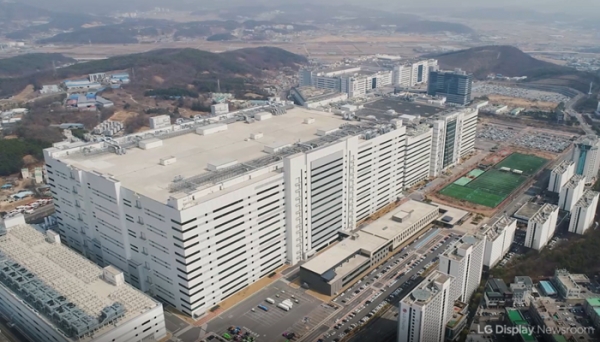
A teardown of Samsung’s newest smartphone shows that its estimated cost of components is about 40% of the device’s sale price, beating Apple’s latest iPhone in this key profitability metric. This suggests that profitability has spurred manufacturers to make foldable smartphones of their own. Samsung is taking advantage of parts made in South Korea for the model, as seen in its local content ratio of about 50%. The estimated cost of the Fold 4, in terms of the parts used in the phone, is about USD670, less than 40% of its sales price. Given its lower cost ratio than the 46% for Apple’s 2022 flagship model, the iPhone 14 Pro Max, the Fold 4 has a higher profit margin. The Fold 4 is priced at about USD1,800, more than USD500 higher than the flagship iPhone. As differentiating smartphones in terms of hardware has become harder, Samsung has positioned foldable phones equipped with new functions as its flagship product, with high added value.(Android Headlines, Asia Nikkei)
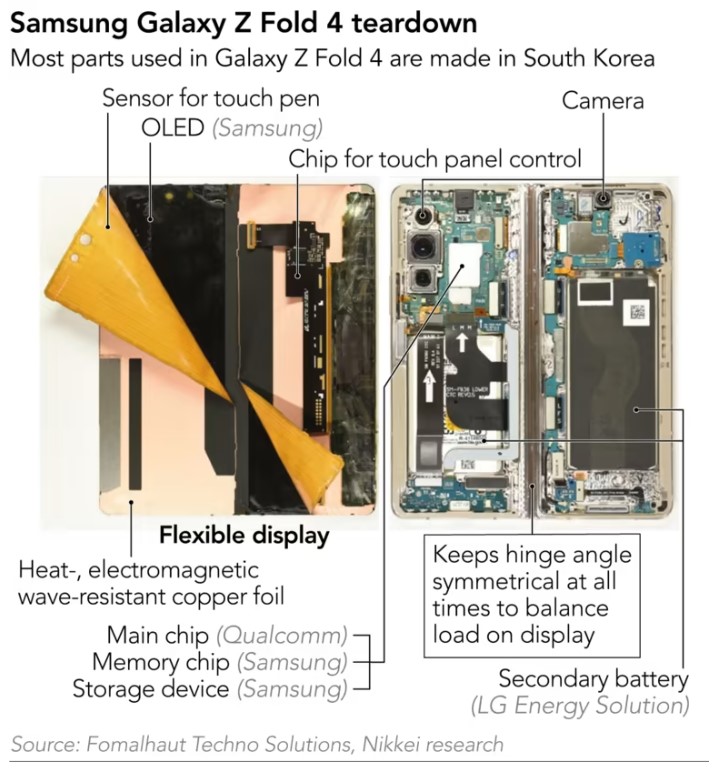

Apple CEO Tim Cook has admitted that Apple uses Sony image sensors in its iPhones as part of the CEO’s supplier tour of Japan. He has thanked Sony CEO Kenichiro Yoshida for showing him around the Kumamoto facility.(The Verge, GSM Arena, Twitter)
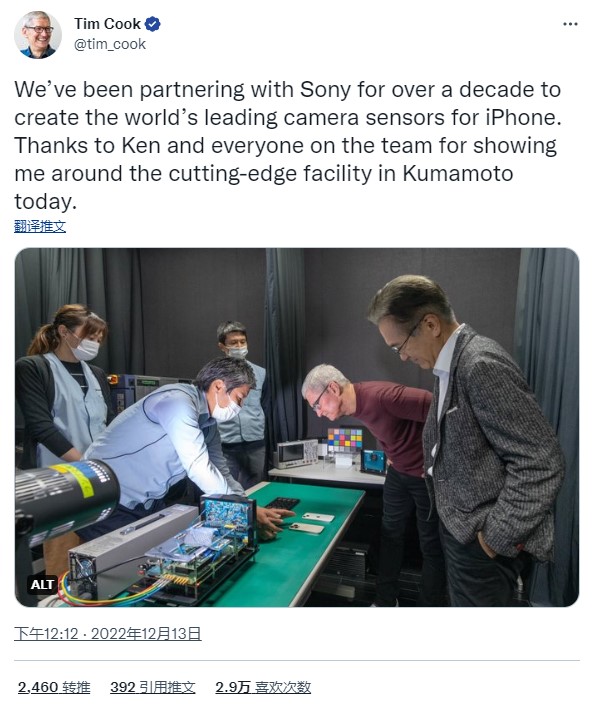

Aeris Communications, a leading Internet of Things (IoT) solutions provider based in San Jose, California, and Ericsson have signed an agreement for the transfer of Ericsson’s IoT Accelerator and Connected Vehicle Cloud businesses. The combination of Aeris and Ericsson’s IoT platforms will connect over 100M IoT devices worldwide, covering 190 countries, and provide IoT connectivity, software and solutions to thousands of enterprises. The new Aeris will be able to offer an extensive IoT technology stack, brought to the market through a strong ecosystem of channel partners, communications service providers (CSPs) and our direct sales organizations.(Laoyaoba, Ericsson, Business Wire)
Samsung has transferred 98 patents it has in the US to Huawei. Combined with the 81 patents it handed over in 2019 to the Chinese company the Korean firm has given Huawei 179 patents in total so far. The pair has signed a cross-licensing agreement in 2019 to end their patent disputes. The number of patents Samsung has given to Huawei is likely worth the same as the difference in their cross-licensing agreement.(The Elec)
Huawei has signed a patent licensing agreement with Samsung, covering standard essential patent technologies such as 5G. Huawei said it has patent cross-licensing agreements with 20 companies, including domestic and foreign companies, and that Samsung is Huawei’s largest licensee among foreign companies in terms of the number of devices sold and the patents covered. It is reported that as of the end of 2021, Huawei holds a total of more than 45,000 valid authorized patent families (more than 110,000 pieces) around the world, of which more than 90% of the patents are invention patents.(Sohu, Sina, Laoyaoba, Huawei Central)
